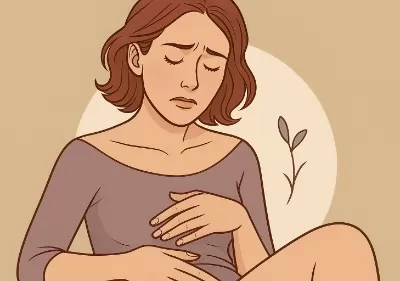Introduction
For many women, menopause arrives with hot flushes, night sweats, or a sudden shift in mood. But for just as many, the quiet disruption comes in a place far less discussed: vaginal dryness. It can start subtly, a faint irritation after exercise, or a sting during intimacy that makes you pause. Left unspoken, it’s easy to brush off as “just part of ageing.” Yet the reality is that this change affects comfort, confidence, and even relationships.
The truth is, vaginal dryness is more than a minor inconvenience. It can make everyday clothing feel abrasive, intimacy feel daunting, and even increase the likelihood of urinary tract infections. What often makes it more complicated is the silence around it — a symptom so common that up to 70% of postmenopausal women experience it, yet few feel comfortable bringing it up with their GP. That silence can turn a manageable medical issue into an emotional weight.
The good news? There are safe, proven, and highly effective solutions available. From simple moisturisers and lifestyle adjustments to targeted hormonal treatments, there are ways to restore comfort and reclaim confidence. And the first step is understanding what’s happening in your body, why it feels the way it does, and which options are most likely to bring lasting relief.
So, what exactly is vaginal dryness during menopause, and why does it happen?
What Is Vaginal Dryness During Menopause?
Vaginal dryness during menopause is one of the most common yet least openly discussed changes women experience. It happens as oestrogen levels decline, and the protective moisture and elasticity of the vaginal tissue begin to thin and dry.
Understanding Vaginal Dryness and GSM
-
Vaginal dryness is part of a broader condition known as genitourinary syndrome of menopause (GSM), which can also include irritation, burning, and urinary symptoms.
-
These changes are a natural part of the menopause transition, but that doesn’t make them any less uncomfortable or disruptive.
-
Many women wonder: "Is this normal, or is something wrong?" In most cases, it is a very common and treatable symptom.
How Common Is It?
-
Studies suggest that around 50–70% of postmenopausal women experience vaginal dryness or related GSM symptoms.
-
Despite how widespread it is, only a small percentage seek medical advice. The hesitation often stems from embarrassment or the assumption that "it’s just part of ageing".
-
To put it into perspective: if you were in a room of ten women over 50, more than half would likely share your symptoms, even if nobody says a word about it.
Vaginal dryness may be common, but it’s not something you need to put up with simply. There are safe, effective treatments that can make everyday comfort – from sitting in your favourite jeans to enjoying intimacy again – entirely possible.
The Science Behind Vaginal Dryness
Understanding why vaginal dryness happens during menopause can take away some of the mystery – and the worry – around it. At its core, it comes down to one key hormone: oestrogen.
Why Oestrogen Matters for Vaginal Health
-
Oestrogen helps maintain vaginal tissue thickness, elasticity, and blood flow. It also keeps the tissue naturally lubricated.
-
When oestrogen levels fall during perimenopause and menopause, the tissue becomes thinner and less able to stay moist.
-
This can lead to a feeling of dryness, itching, or a sandpaper-like discomfort during everyday activities or intimacy.
Other Contributing Factors You Might Not Expect
-
Certain medications, including some antihistamines, antidepressants, and cancer therapies, can reduce natural lubrication.
-
Lifestyle choices such as smoking or high alcohol intake can speed up tissue changes and worsen dryness.
-
Stress and lack of sleep may indirectly impact vaginal comfort by influencing hormone balance.
-
Even if you haven’t reached full menopause, fluctuations in oestrogen during perimenopause can trigger early symptoms.
While the biological process is universal, the way it shows up feels very individual. For one woman it may be mild irritation after a long walk; for another, a sudden sharp sting when she tries to enjoy intimacy.
Recognising the Symptoms
Vaginal dryness is not just a medical term – it’s something you feel in small but persistent ways. Recognising the signs can help you connect the dots between what your body is telling you and why it’s happening.
Physical Signs You Might Notice
-
A persistent feeling of dryness or tightness, even when you’re not active.
-
Itching, stinging, or a mild burning sensation, especially after exercise or wearing fitted clothing.
-
Pain or discomfort during intimacy, sometimes described as a sharp sting or friction that wasn’t there before.
-
Increased risk of urinary tract infections, since the protective barrier of moisture is reduced.
How It Can Affect Confidence and Relationships
-
The physical discomfort often carries an emotional weight: avoiding intimacy, worrying about performance, or feeling less like yourself.
-
Some women describe feeling older overnight, simply because a part of their body no longer behaves as it used to.
-
It’s essential to know these feelings are valid – and more common than many people admit. This is not “just in your head”; it’s a physical, hormonal change with very real effects.
The key is that while symptoms may start subtly, they often build if left untreated. Naming them is the first step towards finding relief.
Treatment Options: From Lifestyle Tweaks to Medical Help
Once you’ve recognised vaginal dryness for what it is, the good news is that there are many safe, effective ways to manage it. Some women find relief with simple over-the-counter options, while others benefit from prescription treatments or a combination of approaches.
Over-the-Counter Options for Everyday Relief
-
Vaginal moisturisers: Used regularly, these can restore moisture to the tissue, not just during intimacy. Think of them as a daily skin moisturiser – but for vaginal health.
-
Lubricants: Designed for use during intimacy, lubricants reduce friction and make sex more comfortable. Options include water-based (easy to wash off), silicone-based (longer lasting), and oil-based (less common but effective).
-
Many women experiment to find what feels best; there is no single “right” product.
Hormone-Based Treatments That Target the Cause
-
Vaginal oestrogen: Available as creams, tablets, or rings, these deliver tiny doses of oestrogen directly where it’s needed.
-
Unlike systemic HRT, the hormone stays local primarily, with minimal absorption into the bloodstream.
-
NICE and NHS guidelines highlight vaginal oestrogen as a first-line, highly effective treatment for menopausal vaginal dryness.
-
A common question is: “Is it safe?” For most women, yes – though it’s always important to review personal health history with a GP.
Lifestyle Approaches to Support Vaginal Health
-
Staying hydrated and reducing alcohol can support tissue health.
-
Quitting smoking helps improve circulation and slows tissue thinning.
-
Pelvic floor exercises boost blood flow to the vaginal area and may improve comfort.
-
Stress management – through practices like yoga or mindfulness – can indirectly ease symptoms by balancing hormones and improving sleep.
There’s no one-size-fits-all answer, and many women end up combining a daily moisturiser with medical treatment for the best results.
Natural and Complementary Approaches
For some women, the idea of trying natural or non-medical options feels more comfortable, either as a first step or alongside prescribed treatments. While the evidence base varies, many find these approaches helpful for easing discomfort and supporting overall well-being.
Herbal Remedies and Supplements: What the Evidence Says
-
Phytoestrogens (plant compounds with oestrogen-like activity) are found in soy, red clover, and some supplements. Studies suggest mixed results – some women notice improvement, while others don’t.
-
Black cohosh is often marketed for menopausal symptoms. Evidence for vaginal dryness is explicitly limited, and quality control of supplements can vary.
-
The key is to check with a healthcare professional before starting, especially if you take other medications, as “natural” does not always mean risk-free.
Mind-Body Practices That Can Help Indirectly
-
Yoga and Pilates: Encourage blood flow to the pelvic area and improve muscle tone, which may enhance comfort and confidence.
-
Mindfulness and stress reduction: Lower stress hormones can improve sleep and mood, indirectly supporting vaginal health.
-
Dietary focus: Staying hydrated and including omega-3-rich foods (like salmon or flaxseeds) can support tissue integrity.
Many women view these approaches as complementary – not necessarily replacements for medical treatment, but as part of a holistic strategy for comfort and confidence.
When to Seek Professional Help
It’s natural to want to try home remedies or discreet solutions first, but there comes a point when professional input can make all the difference. Vaginal dryness is highly treatable, and seeing a GP or menopause specialist can help you find relief faster and rule out other conditions.
Red Flags That Warrant Medical Advice
-
Unexpected bleeding: Any vaginal bleeding after menopause should always be checked.
-
Severe or persistent pain: Especially if it interferes with daily life or intimacy.
-
Recurrent urinary tract infections: Dryness can increase vulnerability, but frequent infections should be assessed.
-
Symptoms that don’t improve: If moisturisers or lifestyle changes aren’t enough, it’s time for a medical review.
How to Talk to Your GP or Specialist with Confidence
-
Be open about how symptoms affect daily life, not just sex – mention discomfort with clothing, exercise, or sleep.
-
Keep a simple diary of when symptoms flare; this helps guide treatment.
-
Ask about the range of options, from vaginal oestrogen to systemic HRT, and how each might fit your personal health profile.
-
Don’t be afraid to bring written notes or even a checklist – many women find this makes the conversation easier.
Far from being “just part of ageing,” vaginal dryness is a quality-of-life issue that deserves proper attention. Often, relief comes after a straightforward consultation and a tailored prescription.
Living Well Beyond Vaginal Dryness
Managing vaginal dryness is not only about easing physical discomfort – it’s about reclaiming confidence and comfort in everyday life. Once symptoms are under control, many women find they can enjoy intimacy, movement, and even something as simple as sitting in fitted clothing without distraction.
Restoring Confidence and Intimacy
-
Open conversations with a partner can make intimacy feel less pressured and more connected. Vaginal moisturisers or lubricants can be framed as part of a routine rather than a sign of “problems.”
-
Sexual well-being doesn’t vanish with menopause. Many women report rediscovering intimacy once pain is no longer a barrier.
-
Confidence often returns in small ways first – wearing jeans comfortably, cycling without irritation, or no longer dreading a yoga class.
Building Ongoing Self-Care into Daily Life
-
Keeping hydrated and prioritising nutrition supports skin and tissue health.
-
Regular pelvic floor exercises not only strengthen muscles but also enhance circulation to the vaginal area.
-
Continuing treatment – whether that’s moisturisers, vaginal oestrogen, or both – is often necessary for long-term comfort.
-
Scheduling regular check-ins with your GP or specialist ensures your treatment stays effective as your body continues to change.
Living well after menopause means acknowledging changes without letting them define you. With the right approach, vaginal dryness can shift from a daily frustration to a well-managed aspect of health.

